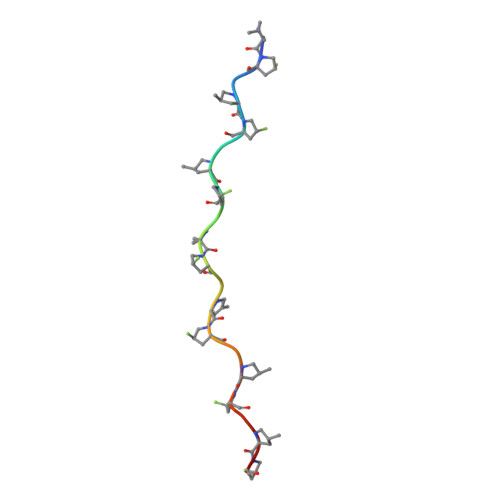Stereoelectronic and steric effects in side chains preorganize a protein main chain.
Shoulders, M.D., Satyshur, K.A., Forest, K.T., Raines, R.T.(2010) Proc Natl Acad Sci U S A 107: 559-564
- PubMed: 20080719
- DOI: https://doi.org/10.1073/pnas.0909592107
- Primary Citation of Related Structures:
3IPN - PubMed Abstract:
Preorganization is shown to endow a protein with extraordinary conformational stability. This preorganization is achieved by installing side-chain substituents that impose stereoelectronic and steric effects that restrict main-chain torsion angles. Replacing proline residues in (ProProGly)(7) collagen strands with 4-fluoroproline and 4-methylproline leads to the most stable known triple helices, having T ( m ) values that are increased by > 50 degrees C. Differential scanning calorimetry data indicate an entropic basis to the hyperstability, as expected from an origin in preorganization. Structural data at a resolution of 1.21 A reveal a prototypical triple helix with insignificant deviations to its main chain, even though 2/3 of the residues are nonnatural. Thus, preorganization of a main chain by subtle changes to side chains can confer extraordinary conformational stability upon a protein without perturbing its structure.
- Department of Chemistry, University of Wisconsin, Madison, WI 53706, USA.
Organizational Affiliation:



















